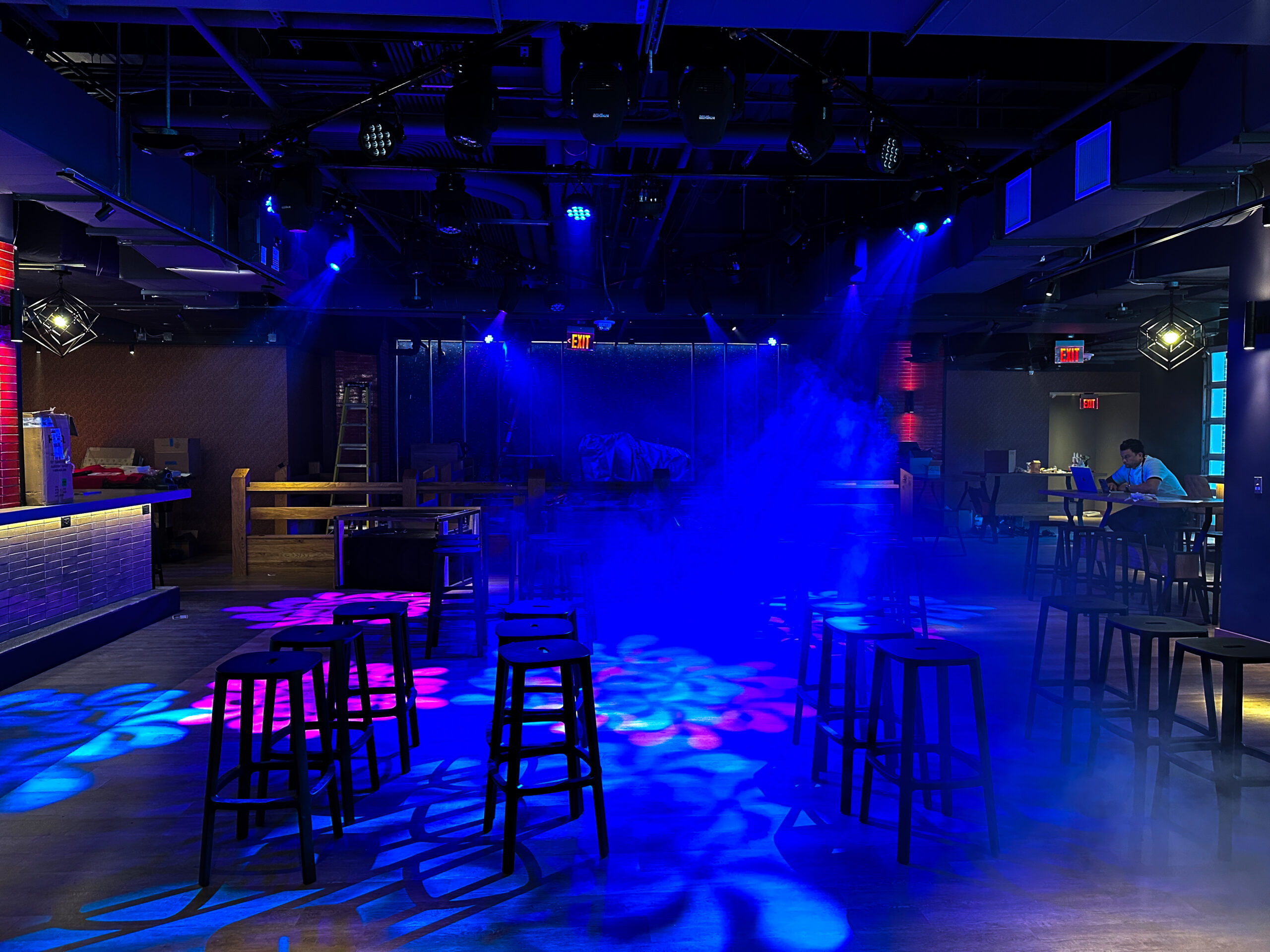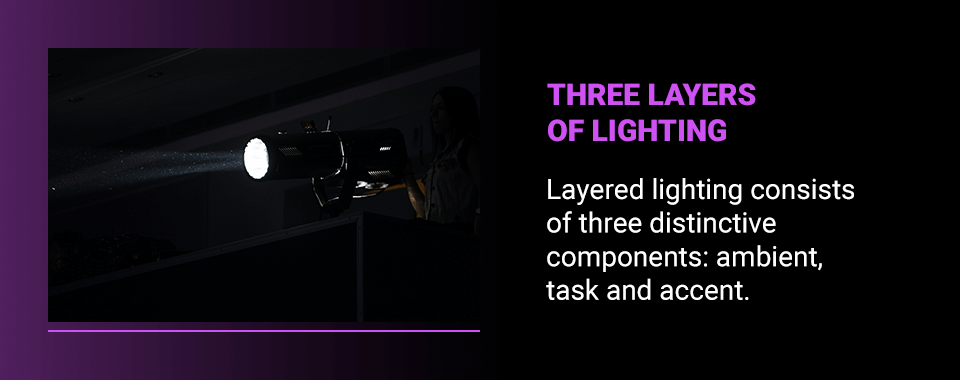

Light design plays a crucial role in an environment’s atmosphere. A room’s lighting can affect people’s moods and even elicit physical reactions. Effective lighting design — whether in a church, school or museum — can enhance a space’s structure and purpose.
One way to approach lighting design is with light layering. By using several different light sources and types at once, you develop an in-depth and balanced atmosphere. Learning more about the different layers of lighting — ambient, task and accent — helps you understand how to integrate them into your property.
Read on to learn more about implementing layers of lighting and how Illuminated Integration can help.
Layered lighting uses three lighting techniques to brighten a room entirely. It adds a base layer and accents to create dimensions and textures throughout the space. Each layer of light complements the other to establish a comprehensive lighting solution. Layered lighting helps build an aesthetically pleasing and functional room.
You can use a wide range of light fixtures and sources to achieve your desired design. Anything from floor lamps to overhead fixtures can establish a layered structure.
Whether you’re lighting a theater or a sports venue, different environments have specific lighting considerations. Layered lighting helps you accentuate particular features and areas.
Here are a few examples of why layered light is so essential:

To understand how to layer lighting, an understanding of three distinctive components should be acknowledged : ambient, task and accent. Here is a closer look at each layer:
Also known as general lighting, ambient lighting adds overall illumination to a room. In other words, ambient lighting brightens an entire space and makes it possible to see clearly. It provides a uniform base layer for rooms.
Designers typically base ambient lighting decisions on room components like:
Natural light is often used as an ambient light source. Designers also create ambient lighting with overhead light fixtures, such as:
Ambient lighting is crucial for illuminating rooms but is often bland on its own. The other lighting layers complement the basic layer to develop a more in-depth lighting solution.
Once the ambient layer lights the entire space, you can implement task lighting to accentuate specific areas. Task lighting highlights certain areas and removes shadows, glares or other distracting features that might cause eyestrain. For example, task lighting fixtures might illuminate a stovetop or countertop in a kitchen. Or, task lighting might emphasize a workstation in an office.
Designers achieve task lighting using lights like:
When choosing task lighting, you should analyze a room’s primary function or focus and consider how much light the associated area requires. For example, the primary function of an office is to provide a place for someone to work. The main focus of the room, then, is likely the desk. With that in mind, consider how much light is needed around the desk.
Some task lights use tight beams and angles to strengthen their intensity. For instance, a task light above a kitchen island might be more intense than a reading nook light.
Combining ambient and task lighting makes a room more functional and accessible. The final lighting layer allows you to add decorative finishes.
Accent lighting unites the three layers with a personalized finish. It complements the other elements and highlights specific architecture or decorations. Accent lighting is the most subjective lighting layer and allows you to customize a space based on preferences and belongings.
For example, you could use accent lighting to emphasize features like:
Common accent lights include:
You can also use accent lights to illuminate hard-to-reach areas. Ambient lighting might be unable to brighten corners or high areas, but you can add accent lights to highlight those spots.
A combination of ambient, task and accent lighting creates a safe, comfortable and accessible environment. From illuminating the room to adding personal touches, a complete layer design can transform your space.
At Illuminated Integration, we understand the importance of well-balanced and detailed lighting design. Whether you manage a performance venue, a K 12 school or anything in between, the lighting impacts performance and enjoyment. Our expert team can help you determine how to layer lighting in a way that optimizes your space. After an in-depth consultation where we discuss your preferences and goals, we build an original design that matches your room’s specifications. Then, our expert technicians install your new lighting system, answering any questions that arise during the process.
Whether you want layered lighting or any other design type, we can help. To get started with Illuminated Integration, contact us today.